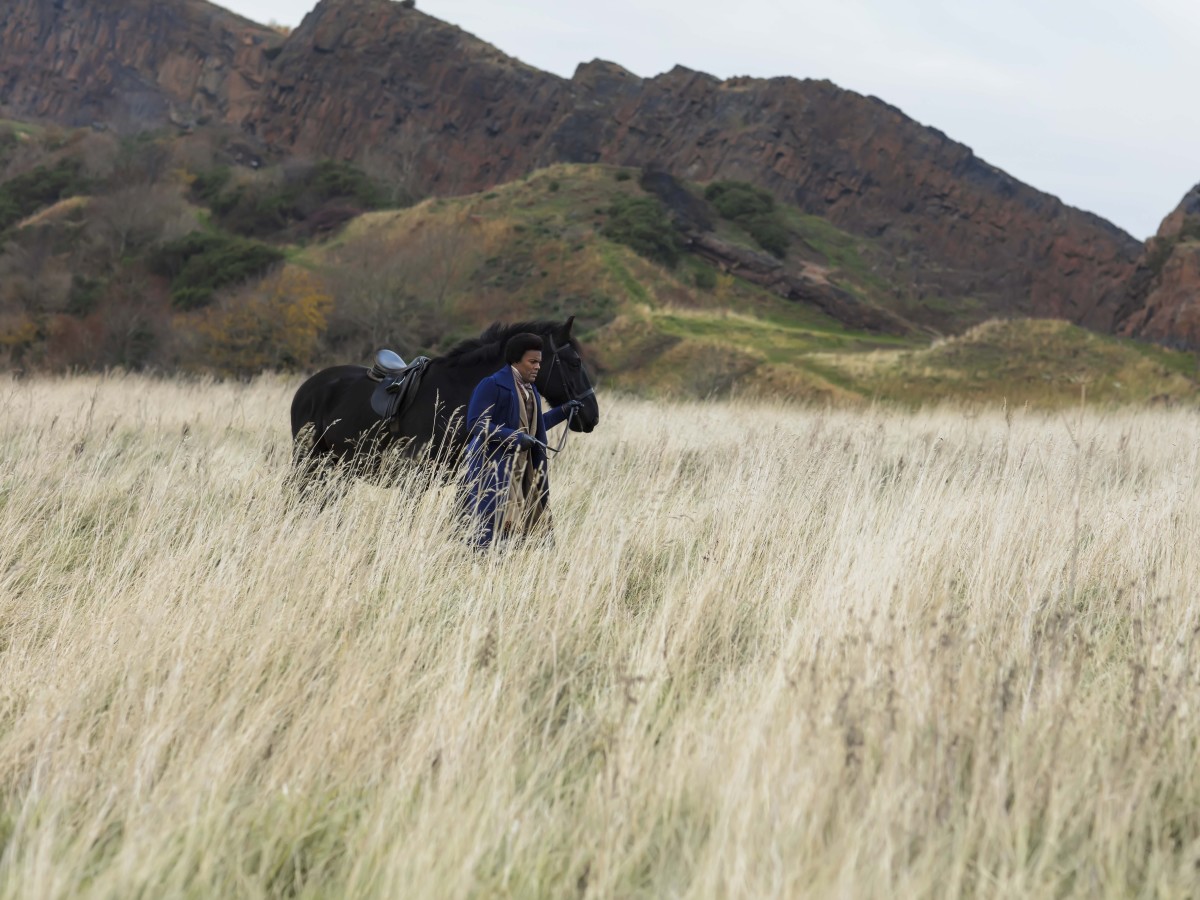Lessons of the Hour at MAG Rochester
The Memorial Art Gallery of the University of Rochester is pleased to announce the exhibition Lessons of the Hour-Frederick Douglass, featuring a ten-screen installation titled Lessons of the Hour by artist Isaac Julien. The work is inspired by episodes in the life of Frederick Douglass (1818-1895), and the issues of social justice that shaped his life's work. Lessons of the Hour-Frederick Douglass will open at MAG on March 3, 2019, with a two-gallery presentation featuring, in the first gallery, three tintypes-an early type of photography in which the photographic emulsion is presented on a metal plate. These are portraits of performers in Lessons of the Hour. The second gallery will showcase the world premiere of the ten-screen film installation.
Isaac Julien created the installation using both analogue and digital technologies: 35mm color film as well as 4k digital. Julien describes the exhibition as a "staging of history seen through a contemporary lens. It opens with tintypes suggesting the archive of the past, and which take on additional resonance in the multi-screen installation that follows". The exhibition will be on view at the Memorial Art Gallery through May 12, 2019. Lessons of the Hour will also premiere at Metro Pictures, New York, on March 8, with the presentation of large-scale photographic works and the ten-screen film installation.
Frederick Douglass was a visionary African American abolitionist, a freed slave who was also the most photographed man of the 19th century. Julien's project is informed by some of the abolitionist's most important speeches, such as "Lessons of the Hour," "What to the Slave Is the 4th of July?" and "Lecture on Pictures," the latter being a text that connects picture-making and photography to his vision of how technology can influence human relations. In the film, the character of Douglass will interact with other cultural icons of his time, namely photographer J.P. Ball; Anna Murray and Helen Pitts, who were Douglass' two wives; Anna and Ellen Richardson, the two English Quakeresses who allowed Douglass to return to America as a free man; Susan B. Anthony, the suffragist and Douglass' longtime friend; Ottilie Assing, a feminist friend and lover; and Ida B. Wells, the anti-lynching black-people's rights activist. Mostly women, these characters were chosen for being representatives of ideals of equality, which were as important then as they are today.
Through extensive use of Frederick Douglass' "timely words," Isaac Julien gives expression to the zeitgeist of Douglass' era, his legacy, and ways in which his story may be viewed today. The work was shot in Washington, DC, where Douglass lived late in life, and where his house in Cedar Hill has been kept almost intact as a National Historic Site; and in Scotland, where Douglass was an active member of the "Send Back the Money" movement, and where he delivered a number of anti-slavery speeches, which Julien restaged inside London's Royal Academy of Arts. Douglass delivered more than 300 lectures in Scotland, Ireland, and England as he sought to affirm his struggle for equality as a global citizen who was very much ahead of his time.
Working in consultation with Professor Celeste-Marie Bernier of the University of Edinburgh, Isaac Julien imagines the person of Frederick Douglass through a series of tableaux vivants. Composer Paul Gladstone Reid created the film's original score.
Isaac Julien is a pioneer of the art of the moving image who, since the early 1990s, has innovated a distinctive non-linear, multi-screen form of storytelling. Adam Finch, Julien's longtime editor, is a key collaborator in this regard. Julien's open-ended narratives propose that spectators actively interpret the work through a physical and sensorial immersion. Drawing from painting, architecture, photography, performance, and sound, Julien constructs poetic narratives of hybrid scenes. "Due to the nature of my practice," the artist has stated, "I do not produce my films using a standard filmic construction, which is mainly grounded in scriptwriting. I often work on multiple screens, which demands a montage technique specially developed for that purpose. I pay great attention to set décor, lighting, performance, mise-en-scène, as well as editing, sonic, and visual effects to create a space for meditation on political and cultural questions."
The project curator John G. Hanhardt notes, "Isaac Julien is a master of the moving image. His films and installations demonstrate a complete command of the medium. In an extraordinary body of work spanning almost three decades and including such masterpieces as Paradise Omeros (2002) and Ten Thousand Waves (2010), Julien has created installations that bring history and individual stories alive. There is no artist working today who makes such compelling and powerful statements about global forces shaping history and our world. His moving images astonish and inform, and demonstrate how art can speak to all of us."



